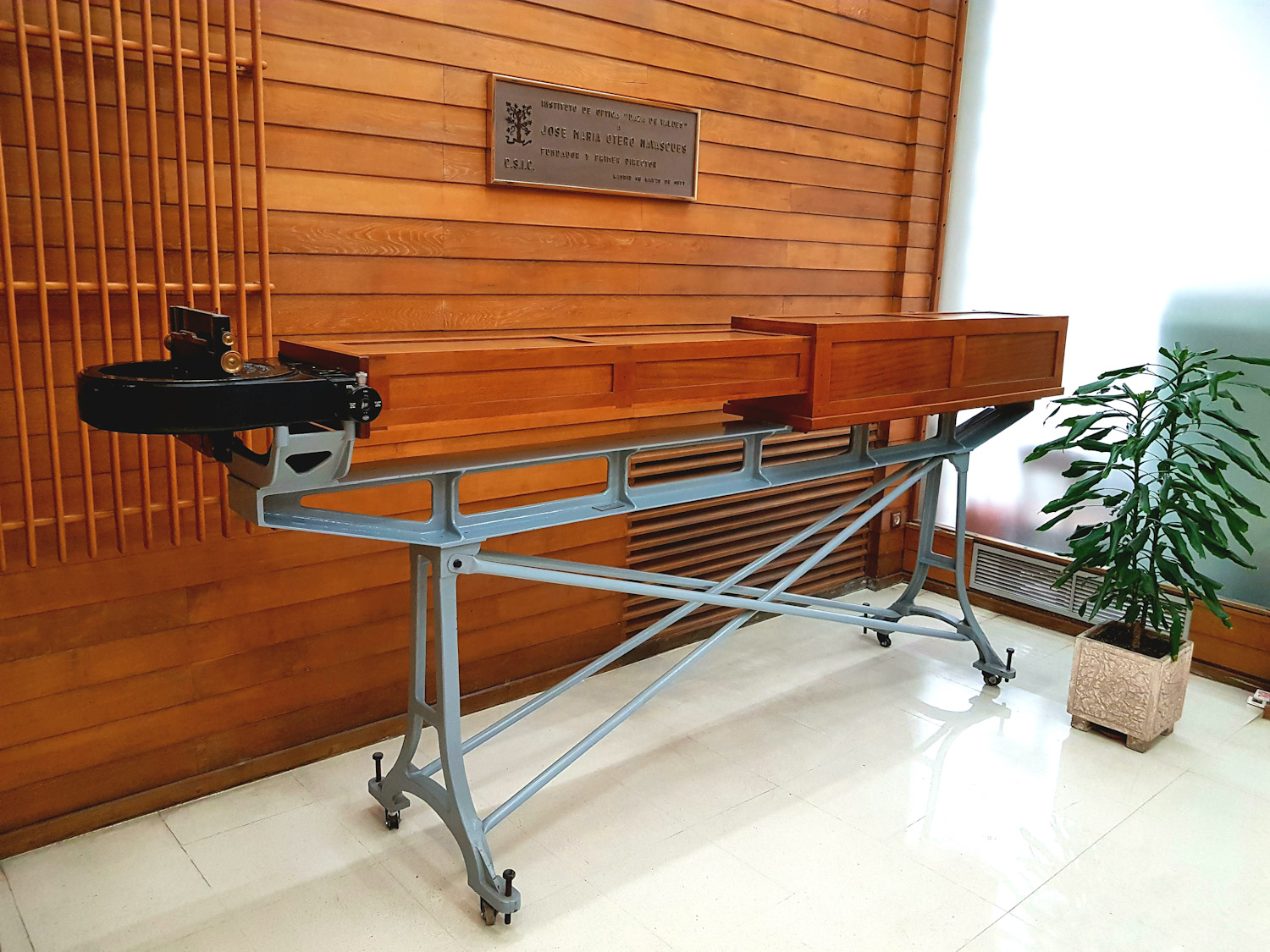The researcher Esteban Moreno has published a book entitled
"Instrumentos de la ciencia española. Los aparatos históricos del CSIC" in which he compiles the 30 most important scientific instruments of the CSIC in the last three centuries.
These instruments have been selected among the instruments recovered in the
Plan for the Recovery of Scientific Instrumentation of Historical Interest of the CSIC from the MuseoVirtual.csic.es
Among them, a spectrograph by Miguel A. Catalán stands out, in which he studied, together with three collaborators (Pilar de Madariaga, Dorotea Barnés and Pilar Martínez), the spectra of the so-called transition metals. After exciting a sample of one of these metals by means of an electric discharge, he directed the light emitted by the metal into a spectrograph, where the light beam was refracted, obtaining a series of lines of different colour and intensity known as the emission spectrum.
These lines are intimately linked with the position of the electrons around the nucleus of the atom. By analyzing their regularity, Catalán contributed to improve the knowledge of the intimate structure of matter. His data allowed Arnold Sommerfeld to propose a model of the atom in which the electrons had elliptical orbits.
This spectrograph is on display at the entrance to the "Miguel Antonio Catalán" Physics Centre at 121 Serrano Street in Madrid.








